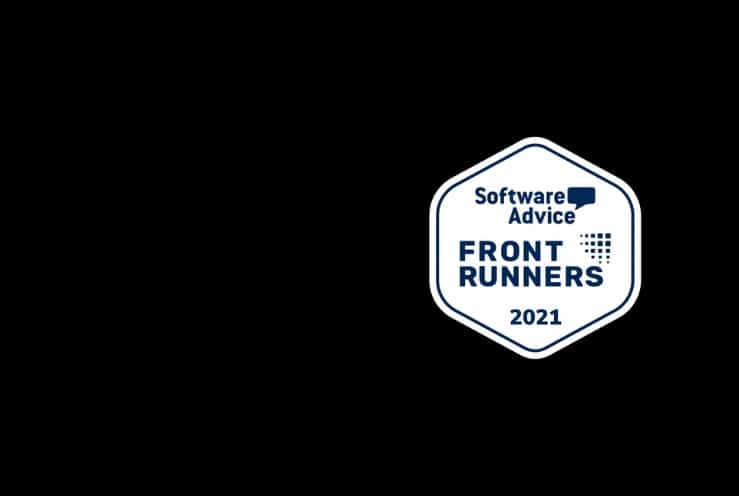
60 Common Text Abbreviations and How to Use Them Right
Text abbreviations have become a natural part of how we communicate. As mobile messaging becomes the norm in business and people expect instant replies, abbreviations keep your messages short and to the point.
However, while abbreviations make communication more efficient, not everyone understands them the same way. Additionally, using the wrong one can confuse your message or convey an unprofessional impression to your customers or prospects.
Choosing the right abbreviation and knowing when not to use one requires knowledge about your customers and striking the right tone for the situation.
In this article, we’ll break down the most common text abbreviations and understand when and how to use them in your organization. If you’re sending a time-sensitive alert or following up with a client, the right abbreviation can help you connect faster.
What Are Text Abbreviations?
Text abbreviations are shortened forms of common words or phrases. You’ve likely seen them in messages, social media, or customer chats.
For example, LOL means “laugh out loud,” ASAP means “as soon as possible,” and FYI means “for your information.”
These abbreviations became popular when character limits were strict. Even today, people still use them because they make conversations more personal and engaging in chat or text messages.
Why Text Message Abbreviations Matter in Business
Using text abbreviations can make your communication feel more natural and relatable. Customers are already using these shortcuts in their daily messages. When your brand speaks the same way, it builds familiarity and creates a more engaging experience..
If you’re sending out reminders, updates, or promotional text messages, abbreviations help you get straight to the point without sounding too formal. This kind of informal communication makes you sound more approachable and saves space.
While not technically abbreviations, emojis often do the same job. A thumbs-up emoji can replace “okay,” and a heart can say “thank you” without words.
Emojis and abbreviations help make SMS language more relatable while also adding a personal and engaging tone.
Types of Text Abbreviations
Text abbreviations come in several forms, each serving a different function in communication. Knowing the difference helps you use them better in personal and business messages.
Acronyms
Acronyms are created using the initial letters of a phrase and are pronounced as a single word. These are widely recognized in casual or semi-formal contexts. It can help reduce message length without sacrificing clarity.
Examples
- LOL – Laugh Out Loud
- YOLO – You Only Live Once
- FOMO – Fear of Missing Out
Acronyms can add energy and personality to your messaging when used appropriately. They work well in customer engagement texts and even team updates.
Initialisms
Initialisms also use the first letters of a phrase, but unlike acronyms, each letter is spoken separately. These are common in business communication and are often used for efficiency.
Examples
- ETA – Estimated Time of Arrival
- OMG – Oh My God
- IDK – I Don’t Know
- FYI – For Your Information
You’ll often see these in quick chats or replies, such as a broadcast to your audience or a private message between team members.
Shorthand and Slang
This type includes simplified spellings and casual variations of common words. These are meant to mirror how people speak in everyday language and can help your brand sound more relatable.
Examples
- Thx – Thanks
- Pls – Please
- U – You
- Tmrw – Tomorrow
While they’re helpful in shortening messages, they should be used in moderation. In customer-facing messages, clarity always comes first. If you’re sending mass texts, it’s essential to balance simplicity with a clear message.
Top 60 Common Text Abbreviations and Their Meanings
When you’re texting customers, clients, or team members, using common abbreviations can make your messages feel more conversational.
These shortcuts reduce character count and make your tone sound friendly, which is a must for effective digital communication.
Here is a comprehensive list of abbreviations you can use in your business communication:
Common Abbreviations for Everyday Messaging
These are the go-to shortcuts people use in casual messages, and they’re just as useful in business texting when used appropriately.
- ASAP (As soon as possible) – Can you send me that report ASAP?
- FYI (For your information) – FYI, our schedule has changed. In my humble opinion, we should notify the whole list.
- LOL (Laugh out loud) – That comment made me LOL.
- BRB (Be right back) – I’m checking with the team, BRB.
- OMG (Oh my god) – OMG, we just hit our monthly goal.
- IDK (I don’t know) – Idk if the file was uploaded.
- BTW (By the way) – BTW, your package is on the way.
- TTYL (Talk to you later) – Thanks for the update, ttyl.
- NP (No problem) – This isn’t a big deal, NP!
- TY (Thank you) – TY for joining the webinar.
- YW (You’re welcome) – YW, happy to help.
- OK (Okay) – OK, you’re all set.
Other Text Abbreviations for Daily Conversations
These are great for keeping things concise while still sounding professional during everyday conversations.
- ETA (Estimated time of arrival) – What’s the ETA on that order? If it’s in before noon, we’ll have time to add media to the launch email.
- TBD (To be Determined) – The launch date is still TBD.
- TBA (To be Announced) – The new product name is TBA.
- OOTD (Outfit of the Day) – Today’s OOTD is now available online.
- ICYMI (In Case You Missed It) – ICYMI, your points expire tonight.
- PLS (Please) – Pls review this before 3 p.m.
- THX (Thanks) – Thx for your reply.
- LMK (Let Me Know) – Lmk if you need anything else.
- HRU (How Are You?) – HRU? Just checking in.
- RN (Right Now) – It’s available in-store rn.
- DM (Direct Message) – DM us for details.
- RSVP (Please Respond) – RSVP to secure your seat. This campaign also includes links through other forms.
Casual Texting Slang
These expressive terms help you sound human. Still, don’t use too many abbreviations in one message, or it’ll confuse the reader.
- It gives / It’s not giving – It’s good / It’s not good
Example: “I looked through the search engine results—shaking my head, that page is not giving.”
- Lowkey – Moderately; kind of
Example: “Lowkey, that group text had me rolling on the floor.”
- I’m dead – That’s hilarious
Example: “That typo in the group chat? I’m dead.”
- Vibe check – Quick test of energy or mood
Example: “That email had great energy. Vibe check passed!”
- Slaps – Really good (especially for music or food)
Example: “This playlist slaps.”
- Cap / No cap – Lie / No lie (honestly)
Example: “That deadline was wild—no cap.”
- Bet – Okay / Sure / Deal
Example: “Meeting at 4? Bet.”
- Main character energy – Confident, standout behavior
Example: “You presenting that deck? Main character energy.”
- Flex – Show off or make a statement
Example: “That portfolio update was a serious flex.”
- Ghosted – Ignored / Cut off without notice
Example: “I followed up twice and got ghosted.”
- Sus – Suspicious or sketchy
Example: “That backlink profile looks sus. You have to check those sources.”
Abbreviations You’ll See on Social Media
These abbreviations are helpful if you’re engaging in user-generated content and social-friendly campaigns.
- TBT (Throwback Thursday) – Check out today’s TBT on Instagram.
- FOMO (Fear of Missing Out) – Don’t let FOMO stop you. Shop now!
- ICYDK (In Case You Didn’t Know) – ICYDK, we now offer free shipping.
- BTS (Behind The Scenes) – Take a look at our bts video from the product shoot.
- VFM (Value for Money) – This new subscription plan delivers serious VFM for small businesses.
- TL;DR (Too Long; Didn’t Read) – TL;DR updates go live Monday.
- GRWM (Get Ready With Me) – Come and GRWM to go to the office.
- OMW (On My Way) – Omw to the store now.
- Insta – An abbreviated name for Instagram
- TT – TikTok
- ICYWW (In Case You Were Wondering) – ICYWW, the offer ends at midnight.
- AMA (Ask Me Anything) – We’re doing an AMA on stories.
Business-Focused Text Abbreviations
You can use these in internal updates or text marketing campaigns for clarity and professionalism. They also reduce typing effort when appropriately used.
- OOO (Out of Office)
- EOD (End of Day)
- WFH (Work from Home)
- CRM (Customer Relationship Management)
- B2B (Business to Business)
- B2C (Business to Consumer)
- ROI (Return on Investment)
- KPI (Key Performance Indicator)
- PTO (Paid Time Off)
- FAQ (Frequently Asked Questions)
- EOW (End Of Week)
- CTA (Call to Action)
- T&C (Terms and Conditions)
The Importance of Abbreviations in Business Communication
Other than sounding friendly or saving characters, abbreviations and acronyms also help you stay compliant with federal and carrier-level regulations.
Business texting is governed by laws like the Telephone Consumer Protection Act (TCPA) and carrier guidelines set by groups like the Cellular Telecommunications Industry Association (CTIA).
If you’re using a business texting solution like Textellent, it helps manage opt-ins, opt-outs, and campaign settings to meet legal requirements. But it’s still your responsibility to make sure the language you use is professional and approved.
This includes the abbreviations you choose. While many are acceptable, some are either discouraged or must follow specific formatting when it comes to disclosures and compliance notices.
Approved CTIA Abbreviations to Use in Your SMS Campaigns
These CTIA-recognized abbreviations are considered acceptable for use in required compliance messaging and SMS marketing communication.
- Msg instead of Message
- Example: “You will receive 2 msgs/week.”
- Txt instead of Text
- Example: “Reply YES to receive weekly txt alerts.”
- / instead of per
- Example: “2 msgs/week”
- mo, ea. mo. or /mth instead of per month
- Example: “$5.99/mo for weekly alerts.”
- Msg&Data Rates May Apply instead of Message and Data Rates May Apply
- This exact phrase is preferred and expected in opt-in disclosures.
These terms are considered carrier-compliant and must be used especially when explaining billing, frequency, or consent. You have to avoid trying to reword these into something creative. Doing so could put your business text messages at risk of being blocked or flagged by carriers.
How Textellent Helps You Stay Abbreviation-Smart
Textellent makes it easy to incorporate abbreviations into your SMS strategy without sacrificing compliance. Here’s how the platform makes abbreviation-smart communication effortless:
Use Templates to Maintain Consistent Abbreviation
When you’re sending messages like FYI: your order has shipped or Pls confirm your appt by EOD, you don’t want every employee writing their version. With Textellent’s template library, you can create and store standardized messages that include your preferred abbreviations.
These templates can be reused by multiple users across departments or locations, which helps reduce effort and preserve your short message service standards.
Schedule Abbreviation-Friendly Texts in Advance
Abbreviations are often used to make messages short and on time.
With Textellent’s scheduling tools, you can pre-plan concise messages and set them to go out exactly when your audience is most likely to respond.
If it’s an appointment reminder or a flash sale, you’re always on point without scrambling at the last minute, which is ideal for fast-paced instant messaging.
Track Message Delivery and Keep Your Lists Clean
Textellent monitors whether messages were delivered, blocked, or opted out. This helps you keep your contact lists clean and ensure your abbreviation-filled messages are reaching real, active users.
Communicate in Any Language With Abbreviation Support
If your business texts in more than one language, Textellent’s multi-language support makes sure your abbreviations are still effective and culturally appropriate.
You can send and receive messages that use non-English abbreviations or region-specific shorthand, without character loss or miscommunication.
How to Implement Texting Abbreviations in a Business Context
When used correctly, text abbreviations can make your SMS messages feel faster and more aligned with how people naturally communicate. Still, context matters.
Here’s how to use abbreviations cleverly in your business messaging strategy.
Use Abbreviations Your Audience Already Understands
Before you start adding shortcuts into your messages, you need to consider who you’re texting. Most customers recognize standard text acronyms, but slang or niche terms can confuse them.
Choose abbreviations that are familiar, easy to decode, and commonly used across age groups when running your landline number–supported outreach or mobile campaigns.
Example:
- Recommended: “FYI, your order has shipped.”
- Not Recommended: “ICYWW, your tracking info is updated.”
Match the Abbreviation to the Message Type
Your tone should fit the situation. For appointment reminders, billing notices, or delivery updates, abbreviations should be clear and professional.
If you’re running a light promotional campaign or re-engagement text, there’s more room to be casual and creative with essential abbreviations.
Formal context:
“Please confirm your appointment by EOD.”
Promotional context:
“We miss you! Come back this wknd and save big.”
Don’t Overload Your Message
Using too much text slang in one message can make it hard to read. You have to keep it simple and aim for one or two relevant abbreviations per text. If your message starts to feel like code, it’s time to simplify.
Personalize Without Losing Clarity
Shortcuts save space, but personalization creates connection. Using merge tags for first names, appointment times, or product details alongside clear abbreviations lets you sound human and efficient.
Example with abbreviation + personalization:
“Hi [FirstName], your appt is set for 3 p.m. tmrw. Txt YES to confirm.”
Preview and Schedule Your Messages
Abbreviations that look good in a draft might read differently on a mobile screen. You always preview your texts before sending. Also, consider the timing.
A playful LOL might feel off at 7 a.m., but it’s fine during a midday promo, which is a subtle shift in verbal communication.
With tools like Textellent, you can preview, schedule, and ensure your messages reflect proper text abbreviations and acronyms before they go live.
Making the Most of Business Text Abbreviations
Text abbreviations make communication feel quick and aligned with everyday conversation styles. But using them means knowing when they help and when they hurt your message.
When to Use Them
In casual chats or peer-level business updates, abbreviations can create a friendly, conversational tone. They reduce typing and keep things light, especially when you’re managing your own business and want your brand voice to sound relatable.
Abbreviations are perfect for SMS reminders, promo codes, or social media responses.
For example, using a playful message can drive more clicks and engagement. These quick texts can become a real marketing asset when matched with your brand’s personality.
Younger or more tech-savvy audiences are used to seeing shortened words in electronic communication. They’re fluent in emoji-plus-acronym language.
In that case, using abbreviations can help you connect with your target audience authentically, without sounding outdated.
However, for older audiences or more traditional customer bases, moderation is key. You need to reference your brand’s approved terms cheat sheet before sending anything out in bulk.
When Not to Use Them
When communicating through channels like email, slang and acronyms should be avoided. Not everyone will recognize casual shorthand or newer expressions circulating on Facebook, IG (Instagram), or other platforms in the digital world.
A well-structured sentence will always do better in formal writing than one cluttered with shortcuts. Think about your message as if it were on public display.
If your recipients span across age groups or technical backgrounds, you need to skip the trendy lingo. What makes sense to Gen Z might confuse Gen X or Boomers. While some people might love optimization, others may see abbreviations as lazy or unprofessional.
Think of it this way: just like you wouldn’t say “LOL” in a quarterly meeting, it’s not ideal to send a cryptic text to a wide audience without explaining.
Some terms may even be mistaken for completely unrelated things (imagine “ATM” being read as automated teller machine instead of “at the moment”).
Save Time With Scheduled Abbreviated Texts—Choose Textellent!
Speed matters in business texting. But only when your message is easy to follow and connects with the reader. With Textellent, you can build abbreviation-smart campaigns that stay professional and compliant.
If you’re sending out appointment reminders, limited-time offers, or customer service updates, Textellent helps you craft messages that fit within character limits while still sounding human.
You can use templates, schedule your texts, set up auto-responses, and personalize your messaging.
If texting is part of how you connect with your audience, Textellent gives you the tools to do it better. Start using business-friendly abbreviations with confidence and automate your outreach.
Sign up for a free trial or book a demo and see how powerful a few well-placed words can be!
FAQs About Text Abbreviations
What does “diky” mean in text?
“DIKY” in text is often used as an acronym for “Do I Know You?” It’s typically seen in casual or informal conversations, like when someone receives a message from an unfamiliar contact. In this context, it’s a quick way to question recognition or call out an unexpected interaction.
This style of texting is part of the method people use to communicate faster and with fewer words. However, it’s not ideal for professional or customer-facing messages, where clarity and tone matter.
What does “1174” mean in texting?
“1174” is a numeric slang term that translates to “meet at a party location.” It’s most common among younger users and belongs to a category of number-based codes that carry hidden meanings.
Although creative and fun in real-life social exchanges, codes like these aren’t widely understood in business settings.
Using such abbreviations could impact professional tone or even confuse readers. If your goal is maintaining brand consistency, it’s best to avoid unclear or age-specific slang.
What does “WWWW” mean in a text message?
In a text message, “wwww” is a form of Japanese internet slang used to show laughter, similar to how people use “lol” or “hahaha” in English.
The letter “w” stands for “warau” (笑う), the Japanese word for “to laugh.” When someone types “wwww” or even adds more w’s, they’re simply laughing harder.
While you’re unlikely to use this in most U.S. business texts, it’s helpful to know if you’re connecting with global customers. Recognizing cultural texting norms like this helps build better rapport, which can lead to stronger relationships and a longer customer lifetime.





